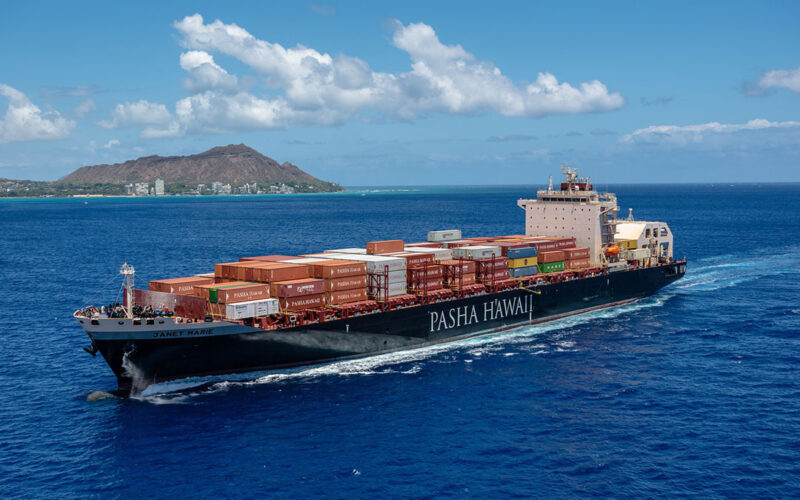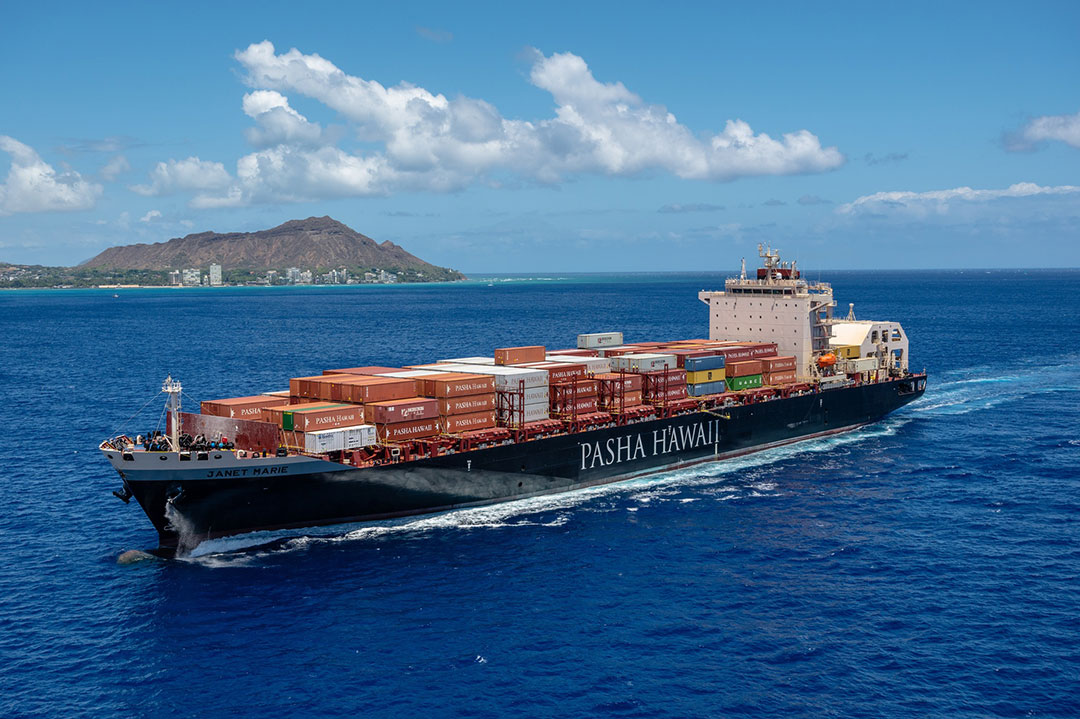
These days, the delivery of any new U.S.-flagged cargo ship is cause for celebration. Pasha Hawaii has had two such occasions in less than two years.
The most recent happened in late July with the arrival of the 774-by-115-foot Janet Marie. It is the second ‘Ohana-class container ship and a sister ship to George III, which entered service last year. Both run on cleaner-burning liquefied natural gas (LNG) fuel stored in cryogenic tanks on the aft deck.
Seatrium AmFELS shipyard in Brownsville, Tx. built both ships using a Seatrium design optimized for efficiency and speed while the ship is underway in the open ocean.
“The design has worked out really well for us,” said Ed Washburn, senior vice president of fleet operations for Pasha Hawaii. “The efficiency of the ship is fantastic.”
The ‘Ohana class ships cruise at a blazing fast 23 knots. That extra speed is helpful in keeping a schedule, particularly if cargo is delayed at the port or other hiccups happen along the way. “Our on-time arrival has been 100 percent since (George III) has been in service, and it is very dependable,” Washburn said.
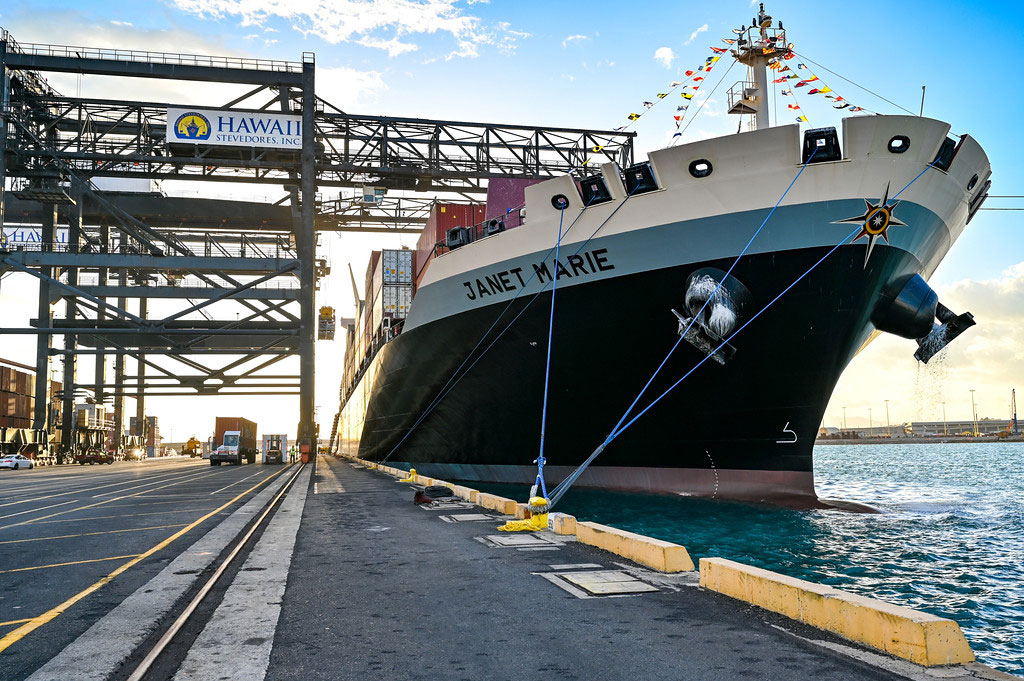
Pasha Hawaii, which is based in Honolulu, operates a fleet of oceangoing ships that carry cargo between Oakland, Long Beach and Honolulu. George III and Janet Marie are the company’s first newbuilds since 2015, when Halter Marine delivered the 692-foot container/roll-on/roll-off (con-ro) Marjorie C. Their first vessel, the pure car/truck carrier Jean Anne, entered service in 2005.
Not long after Marjorie C entered the Hawaii trade, Pasha officials started thinking about a new series of ships. They began the process by consulting with crews, stevedores, operations staff and sales personnel to understand what each considered important on a new vessel.
By then, company executives had already decided to pursue LNG as the new ships’ primary fuel.
Seatrium took those concepts and ideas and turned them into an optimized hull form customized with computational fluid dynamics (CFD). The Becker rudder and MAN propeller systems were developed by The Netherlands-based Maritime Research Institute for high-efficiency and performance.
“Because of the different iterations of the CFD analysis, at the time it was designed, it was the most efficient container ship hull in the world,” Washburn told Professional Mariner in 2021. “There is hardly a straight plate on it,” he added. “There is so much curvature in the hull. It is beautiful to see.”
George III and Janet Marie can carry 2,525 twenty-foot equivalent units (TEU) in a configuration specifically designed for the Hawaii trade lane. The ships can carry containers ranging from 20 to 45 feet, including up to 400 45-foot refrigerated containers.
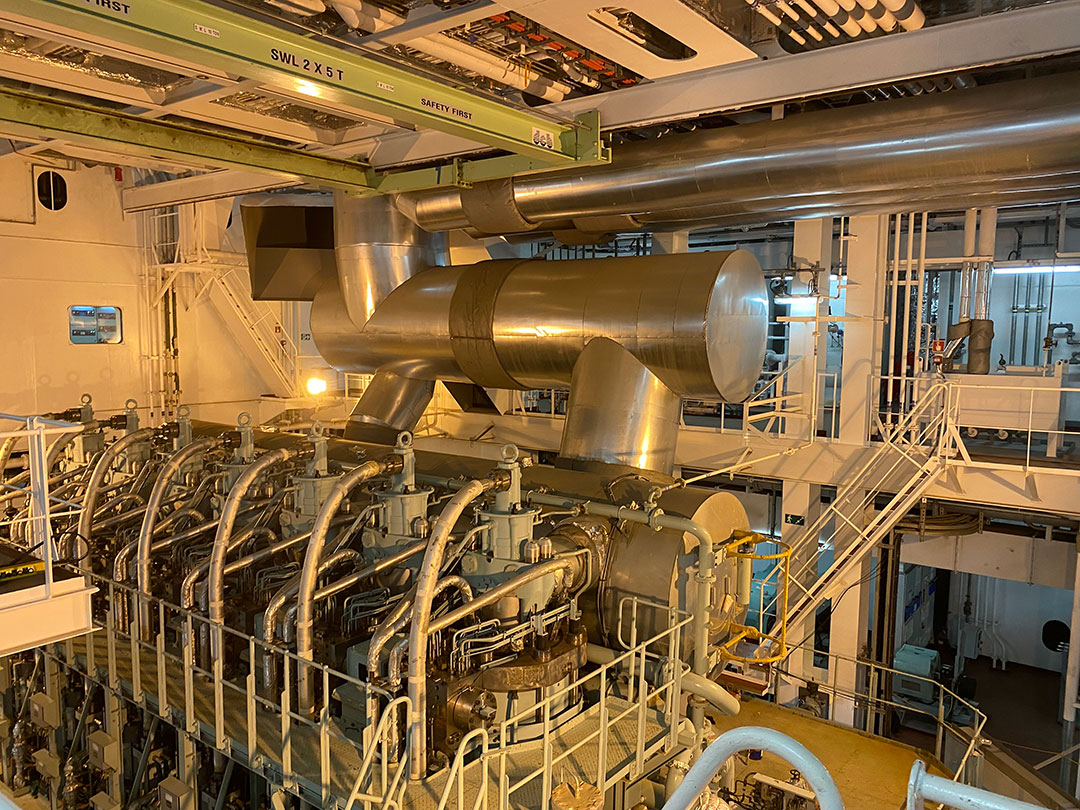
Propulsion on the new ships comes from a single MAN B&W engine that delivers 30,000 kW, or just more than 40,000 hp. The engine can safely burn marine diesel, low-sulfur heavy fuel oil and LNG. Electrical power on the ship comes from three 2,760-kW MAN B&W auxiliary engines that also can run on LNG or traditional fuels.
The ships run nearly entirely on LNG fuel during the 96-hour runs between Long Beach and Honolulu, but there might be short intervals at low speeds where the engine reverts to marine diesel. “We can get down to about 15 rpm and stay on gas with the main engine,” Washburn said, noting that that translates roughly to dead slow ahead. While in port, the generators run on LNG.
LNG burns substantially cleaner than traditional marine diesel. Compared to heavy fuel oils, it generates 90 percent less nitrogen oxide and 20 percent less carbon dioxide while producing zero sulfur (SOx) emissions, Pasha said in 2021 of the ‘Ohana-class ships. Both exceed IMO 2030 requirements for ocean-going vessels.
“The most dramatic positive impact of an LNG fueled ship is the impact on port communities,” Washburn said. “There is no SOx, which contributes to acid rain, and there is no particulate matter, which is that fine black dust and one of the biggest causes of respiratory disease.
“We believe we made the right choice,” Washburn continued. “The cost of LNG is a little more expensive than we had planned but it is manageable. Our customers appreciate it, and we like being the cleanest shipping line on the U.S. West Coast right now.”
Pasha Hawaii formed West Coast Clean Fuels with Clean Marine Energy and World Fuel Services to supply LNG to the company’s ships, as well as other vessels. The fueling company works with four LNG suppliers and it is exploring opportunities to bring an LNG bunker barge to Southern California. The company also is expanding into hydrogen fuel delivery in San Francisco.
Crew comfort was an important part of the design and outfitting process. The ‘Ohana class ships have accommodations for 28 people, plus a six-person riding crew, in cabins with multiple configurations. The ships also have an owner’s stateroom and a pilot cabin, as well as meeting rooms, a gym and other amenities. Wireless internet and TV are available throughout the deckhouse.
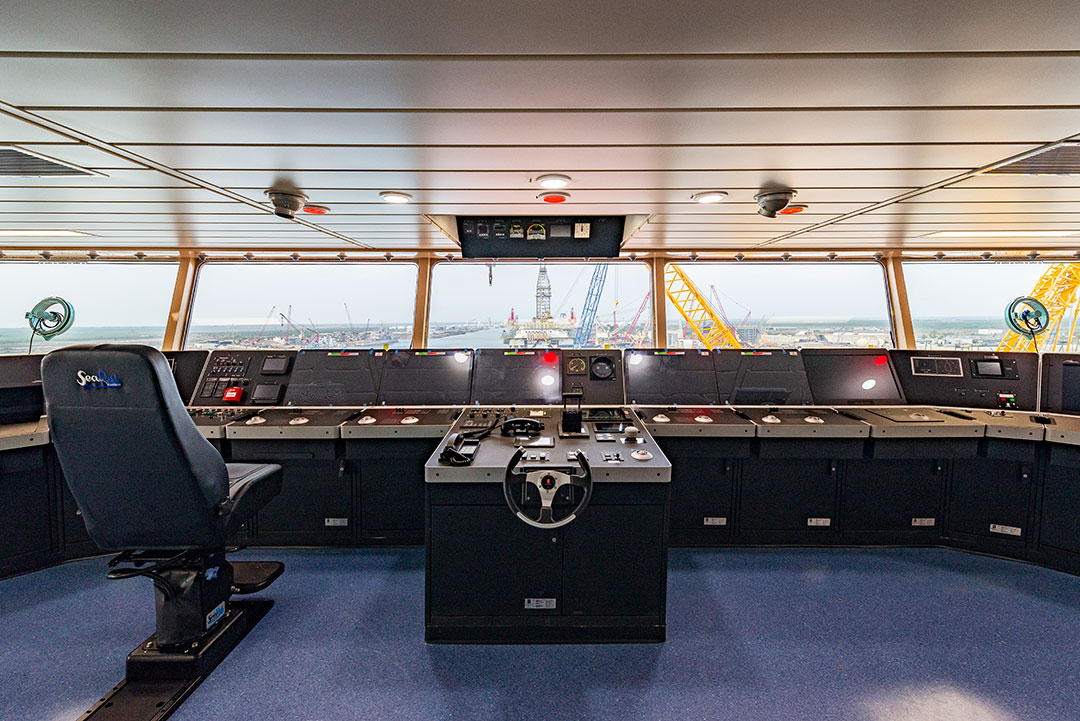
Kongsberg supplied key navigation equipment and the bridge consoles that occupy the wheelhouse. The system has two X-band radars, an S-band radar, electronic chart display and information system (ECDIS) and AIS. The chart table is equipped with a course recorder, weather fax and Navtex receivers, along with two differential GPS systems and other equipment, Washburn said in 2021.
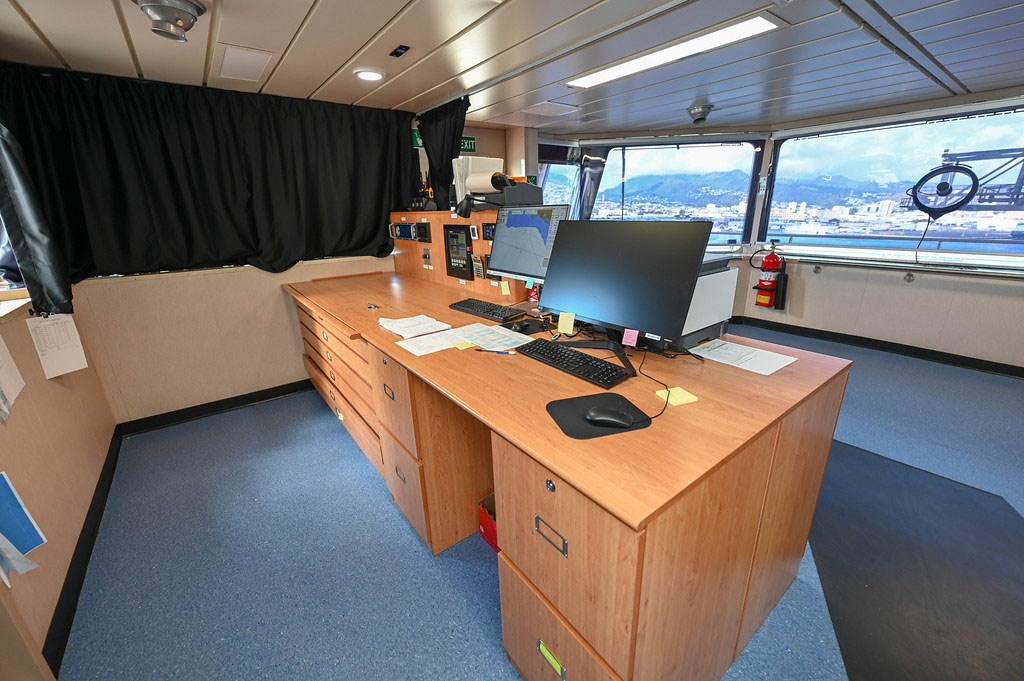
The Hawaii Pilots Association is charged with guiding ships in and out of Honolulu Harbor. Capt. Ed Enos worked George III on its first outbound run from Honolulu back to Long Beach in August 2022.
“Even though she was loaded up with a full profile of empty containers and in a ‘light condition’, she still maneuvered very well,” Enos said recently. “All the pilots in Hawaii have handled her now in a variety of wind and sea conditions, including being fully loaded on arrival inbound at Honolulu Harbor.
“We are very pleased with their performance,” Enos continued. “These hulls are directionally stable, and they are easy to manage in our relatively small harbor. The Janet Marie will be another great ship to have in a dedicated Jones Act service to Hawaii.”
George III and Janet Marie are named for the late parents of George Pasha IV, the president and CEO of Pasha Hawaii,
Pasha IV represents the third generation of family leadership for the company, which was founded in 1942.
“These ships symbolize the best of American ingenuity and ship building,” Pasha IV said of the two ‘Ohana class ships. “My mother was a wonderful supporter of the entire Pasha enterprise, and like my father, had much aloha for our team members, colleagues and partners.
“We are extremely grateful to the Ports of Long Beach, Honolulu and Oakland,” he continued, “for their invaluable partnership and support in bringing both George III and Janet Marie into service.” •

